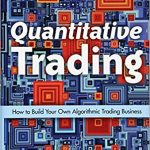Quantitative trading can be understood as an automated trading program, which is divided into three processes: input strategy, implement
strategy and output result.
Strategy is easy to understand. For example, I think this token will inevitably fall after two days’ rise. This is a strategy that I implement through algorithm. Whenever I encounter a situation that two consecutive days of increase, I think it is a signal of fall, and I can carry out some selling operations. It can be understood as the trading rules of my quantitative trading procedures.
Implementing is to connect these strategies to trading platform, and then put them into the market, so that the program can automatically implement trading for us. Whenever the market reaches the rules we set in advance, it will automatically carry out trading operation.
When we execute quantitative trading strategy in real market or run the strategy in historical data for a period of time, the ultimate rate of return or other income indicators we get is our result. Of course, the more you earn, the better this strategy may be at this time.

And quantitative trading can basically avoid the subjective emotional problems. No matter how the market changes, the bot will not feel optimistic or pessimistic. It only knows the rules and conditions. If it can’t reach the purchase conditions, no matter how the market bluff, it won’t have any fluctuations and buying actions.
The greatest advantage of quantitative trading is to reduce the impact of investors’emotional fluctuations and avoid making irrational investment decisions under extreme fanaticism or pessimism in the market.
How to learn quantitative trading?
There are three steps to learn:
(1) Programming languages: learn a computer programming language, such as Python, JavaScript, C++, etc.

(2) Establish appropriate quantitative strategy: a good quantitative trading strategy can better predict market behavior and grow the investment gains in high probability.
Establish mathematical model.
Buy or sell at the right time according to the mathematical model.
Start with imitation. Find a simple strategy and program it by yourself. Understand every technical detail of it, from strategy design idea to system implementation.
(3) Backtest your trading strategy to see its behavior in market.
Backtest it in simulate historical data. If the test data passes, you can run it in market.
Strategic models may have high returns on historical data, but it may not be the same thing in the real market. This is an over-fitting problem, which is serious and common in quantitative trading. Short-term withdrawals can be hidden risks, too.
To some extent, quantitative trading is the symbol of mature trading market.
FMZ Quant offers strategy writing/ backtesting/ running for quantitative traders. There are free public strategies for you to modify, you can also buy or rent others’ strategies and backtest them in historical market data or real market data.






